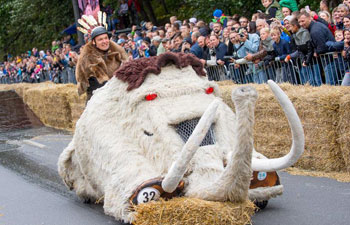LOS ANGELES, Sept. 17 (Xinhua) -- Researchers at the California Institute of Technology (Caltech) have helped to design a new generation of heart valve which was implanted into a human for the first time in late July.
The new heart valve is longer-lasting, costs less to manufacture, and is more biocompatible than options that are currently available to patients, according to a press release on Tuesday.
The new Tria heart valve was created by Foldax Inc., a Caltech startup cofounded by Mory Gharib, professor of Aeronautics and Bioinspired Engineering in the Caltech Division of Engineering and Applied Science.
It was implanted in a patient with aortic valve disease at Beaumont Hospital in Royal Oak, Michigan, as part of an early feasibility study of the U.S. Food and Drug Administration.
Aortic valve disease -- a condition where the valve between the main pumping chamber of the heart and the body's main artery stops functioning properly -- can either be congenital, age-related, or the result of other diseases.
According to researchers, the heart valve that the Tria is intended to replace has three flaps, or leaflets, connected by flexible tissue.
As the heart beats and pumps blood through the valve, the flexible tissue bends outward, opening the valve. In between the beats, the flexible tissue bends back in, closing the valve and preventing blood from flowing backward. When the leaflets become diseased they stiffen and impede blood flow.
Individuals affected by the disease often require open-heart surgery to replace the malfunctioning valve, for which they have had two options: a mechanical valve or a tissue valve. Both can be expensive options.
In contrast, the Tria valve uses a newly developed biopolymer material coupled with a bioinspired shape to create a valve capable of lasting decades without calcification, risk of clotting, or damage to red blood cells, according to researchers.
In testing, one valve has already lasted for 600 million cycles -- the equivalent of around 15 years -- without signs of significant wear and tear, Gharib said.
The unique polymer that was key to the valve function was developed in partnership with Australia's national science agency, the Commonwealth Scientific and Industrial Research Organisation.
"It's a powerful combination of the bioinspired design and advanced engineering that we have at Caltech," Gharib said. "This is among my proudest moments. Creating something with the potential to save and improve lives is one of the reasons I became an engineer."













